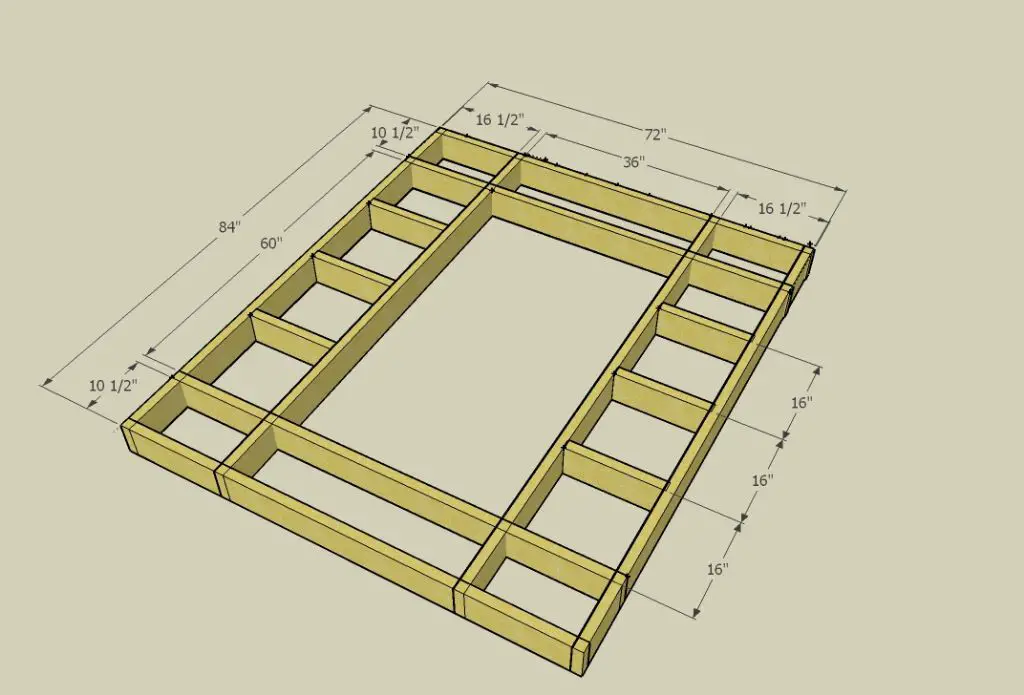How Far Do Horseshoe Pits Have To Be Apart?
Horseshoe pitching is a popular backyard game enjoyed by many across North America. While often played casually without strict adherence to regulations, there are official rules that govern tournament play. One key regulation in horseshoe pitching is the required distance between the two pitching pits. This dictates how far apart the metal stakes must be placed and standardizes the playing field. Understanding the proper specifications and reasons behind them allows both serious competitors and casual players to get the full horseshoe pitching experience.
Official Rules
The National Horseshoe Pitchers Association (NHPA) is the official governing body for the sport of horseshoe pitching in the United States and Canada. According to the NHPA’s official rule book, “RGS BOOK – Playing Rules”, the standard distance for horseshoe pits is 40 feet apart from the back of each pit (source).
This 40 foot regulation is the mandatory requirement for sanctioned tournaments and events. The exact wording from the NHPA rule book states: “The stake shall be 40 feet apart (measured to the outside of the heels) and the pit shall be 43 feet apart (measured from the outside of one pit to the outside of the other)” (source).

Having a uniform distance of 40 feet between pits allows for standardized gameplay and fair competition across different venues. This regulation ensures consistency at the professional level.
Reasons for 40 Feet
The standard distance between horseshoe pits is 40 feet according to the National Horseshoe Pitchers Association (Wikipedia). This distance was chosen because it provides the right balance of challenge and scoring potential.
At 40 feet, there is enough distance between the pits that throwing a ringer takes considerable skill and precision. Horseshoe pitching is not easy at this length. Players must learn to properly lob the horseshoe in an arc to get it to land correctly around the stake. Novices will struggle to regularly throw ringers from 40 feet away.
However, 40 feet is not so far that ringing the stake is impossible. With practice and technique, players can become proficient at landing ringers from this distance. The 40 foot pitch provides the satisfaction of ringing the stake while still requiring talent and effort to do so consistently. This spacing makes for exciting gameplay and allows truly skilled pitchers to shine.
The 40 foot distance also enables the right amount of scoring strategy. Horseshoes that land close to the stake have the potential to be ringers on future throws and can block an opponent from landing their shoe in the same spot. Leaving shoes near the stake adds an element of “board control” like in curling. The spacing gives players chances to set up points while also providing a big enough target area to reward accurate throws.
Adjustments for Casual Play
While the official rules stipulate that horseshoe pits should be 40 feet apart, many backyard players opt for shorter distances when setting up a casual game. According to the Basic Horseshoe Rules, distances of 30 or 35 feet are commonly used for more casual backyard horseshoe play.
Shorter distances can make the game more accessible and enjoyable for players of all ages and abilities. Children, seniors, or others who don’t have the arm strength to make a 40 foot toss can still participate and have fun when the pits are set up at 30-35 feet apart. The shorter distance also allows for more frequent ringers and quicker games, keeping everyone engaged.
Of course, the tradeoff is that shorter distances reduce the challenge level and make ringers less of an accomplishment. But for many backyard players, fun and inclusion take priority over hardcore competition. Adjusting the distances based on the players involved is a great way to customize the backyard horseshoe experience.
Constructing Pits
When constructing horseshoe pits, it is important to measure precisely between the stakes to ensure the pits are 40 feet apart according to the official rules. As described on scollins.com, “Drive a stake at each end of your pit…Now pull your tape tight and measure exactly 40 feet between the stakes.”
The pits themselves should be sturdy and level. The Parkside Journal advises “Each pit is constructed using pressure-treated lumber and filled with clay and sand to create a durable, consistent playing surface.” Using quality materials prevents erosion or shifting over time. Anchor stakes can provide added stability to maintain the precise 40 foot distance.
By carefully measuring between anchoring stakes, building sturdy sidewalls, and maintaining a smooth, level clay playing surface, you can construct regulation horseshoe pits optimized for fair play and lasting use.
Safety Considerations
When setting up a horseshoe pit, it’s important to leave enough open space around the pit area as a safety precaution. The RGS BOOK – SPECIFICATIONS recommends having at least 6 feet of clearance on each side of the pit and 10 feet of clearance at each end. This helps prevent spectators or passersby from being accidentally hit by a stray throw. Having ample room also allows players space to safely follow through on pitches without fear of tripping or colliding with objects or people.
Additionally, take care that the area surrounding the horseshoe pit has an even, stable surface. Avoid pitches on slick grass, loose sand, steep slopes, or uneven terrain which could lead to slips, trips, and falls. The footing around the pit area should be flat, dry, and free of hazards or obstructions which pose tripping risks. Ensure proper lighting as well to prevent any visibility issues when navigating the space. Proper maintenance and awareness of the terrain and surroundings helps minimize safety incidents.
Accessibility
Horseshoe pits can be made more accessible for people with disabilities through some simple adaptations. Portable, adjustable-height pits allow players to sit or stand while pitching horseshoes. The height can be adjusted to suit each player’s needs. These portable pits often have ramps leading up to the pitching area as well (Source: Accessibility Information).
There are also adaptive pitching and scoring options to accommodate different abilities. For example, a player in a wheelchair can use a pitching ramp to roll the horseshoe instead of tossing it. Allowing the horseshoe to touch or lean against the stake, instead of requiring a ringer, makes scoring more inclusive. Having an aide assist in retrieving and positioning horseshoes also helps increase accessibility (Ha Ha Tonka State Park Accessibility Information). With some simple adaptations, horseshoe pits can be made more user-friendly for all abilities.
Variations
While the official rules call for horseshoe pits to be 40 feet apart, there are some popular variations of the game that use different distances or setups. One of the most common is washer pitching, which is played with metal washers instead of horseshoes. Washer pits are often set up around 15-20 feet apart since washers are lighter than horseshoes and can be tossed with a softer underhand motion rather than a full pitch.
Another variation is stake pitching, where metal rods or rebar stakes are driven into the ground instead of having permanent pits. The stakes are typically set up 20-30 feet apart depending on preference. Since there are no backboards, stake pitching takes a bit more skill to ring the target. Additionally, rubber horseshoes can be used for indoor play or for children, with shorter distances of 10-15 feet between stakes.
While the 40 foot official distance is designed for regulation horseshoe pitching, the lighter weight of washers and flexibility of moveable stakes allow for a range of creative variations. The most important factor is making sure the distance provides a fun but challenging game for all skill levels.
Tournaments
Horseshoe pitching tournaments have seen growing popularity at both the community and professional levels. Tournaments bring together players of all ages and skill levels to compete and enjoy friendly camaraderie around a shared hobby.
Most tournaments follow the standard rules and court specifications set forth by the National Horseshoe Pitchers Association (NHPA). This helps ensure consistency and fairness across different events. According to the NHPA, official tournaments feature two clay or dirt pits spaced 40 feet apart, with a metal stake rising 14 inches from the ground at each pit. Players take turns pitching horseshoes from one pit to the other, aiming to encircle the stake.
At the community level, many towns and cities host local horseshoe pitching leagues and tournaments throughout the summer months. These are popular for bringing residents together and providing friendly competition. Larger state and regional tournaments attract more competitive players looking to qualify for the annual NHPA World Horseshoe Tournament.
For professional players, prizes and sponsorships are up for grabs at high-level NHPA sanctioned tournaments. The top pitchers in the country compete at these events to earn points and improve their world rankings. The NHPA World Tournament is the pinnacle event each year, drawing hundreds of competitors and thousands of spectators from across the globe.
Conclusion
When it comes to regulation horseshoe pit distance, 40 feet between the pits is the standard for tournament play. This distance presents a challenging but achievable target for experienced players to showcase their skills. For more casual backyard games, players can adjust the distance as needed to accommodate all skill levels. The key is enjoying time with friends and family while partaking in this classic outdoor pastime. After learning the origins and regulations around the 40 foot distance, don’t be intimidated to give horseshoe pitching a try yourself. Just set up a pit, grab some shoes, and have fun! The joy comes from friendly competition, not precise measurements.





